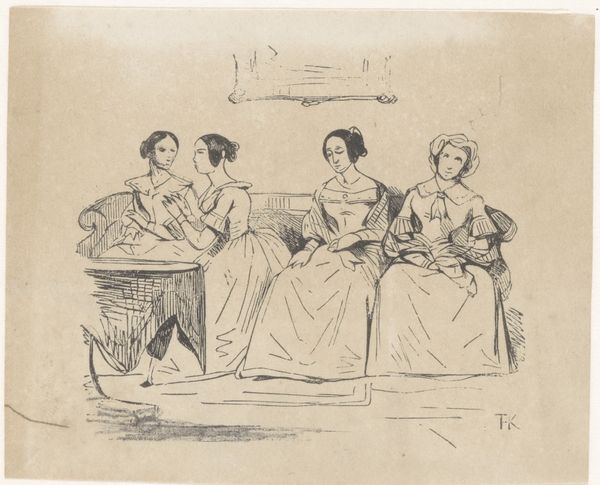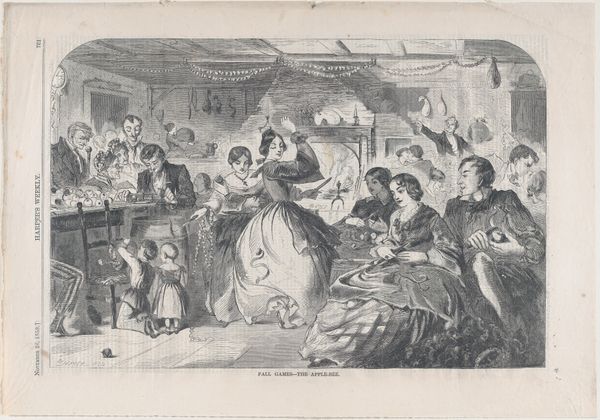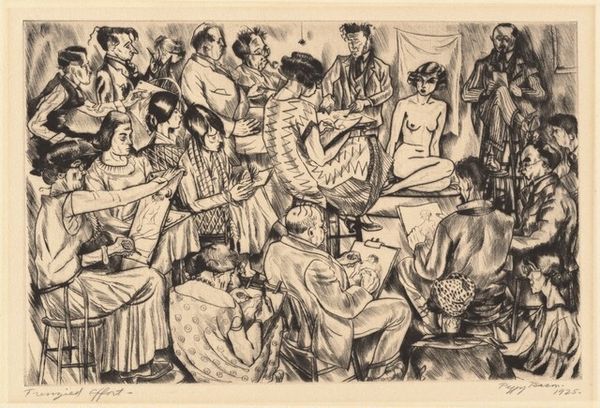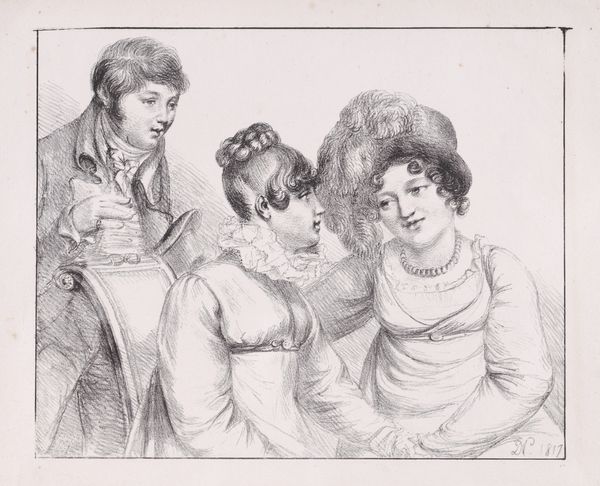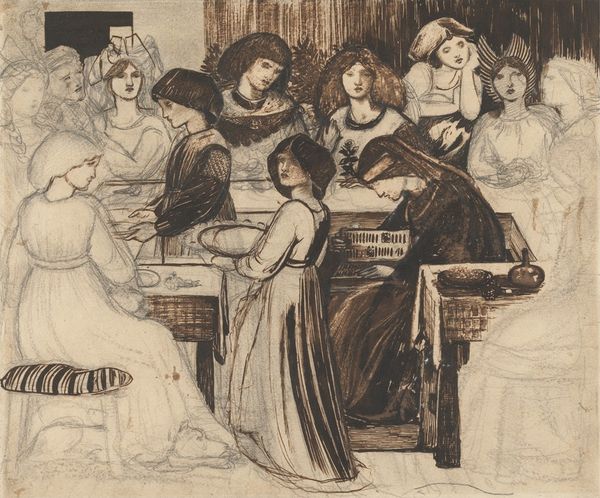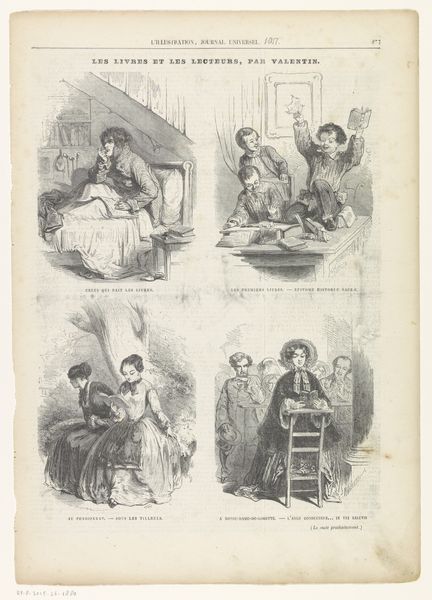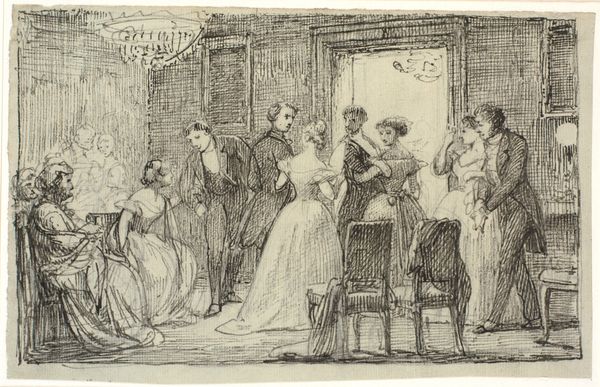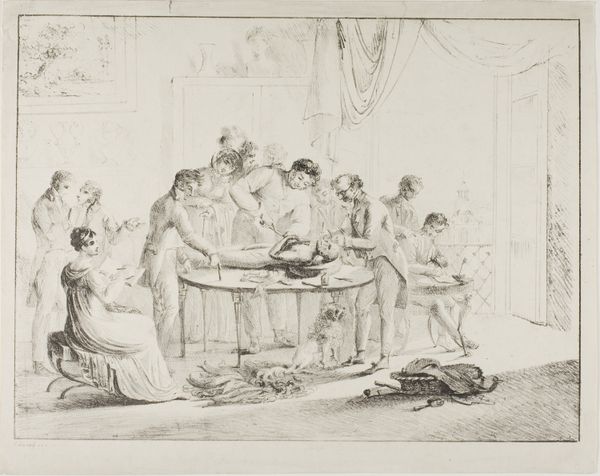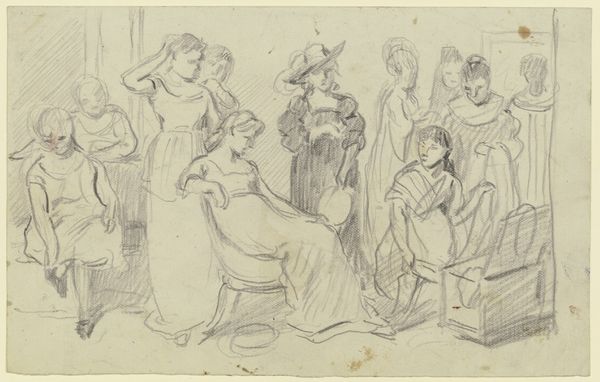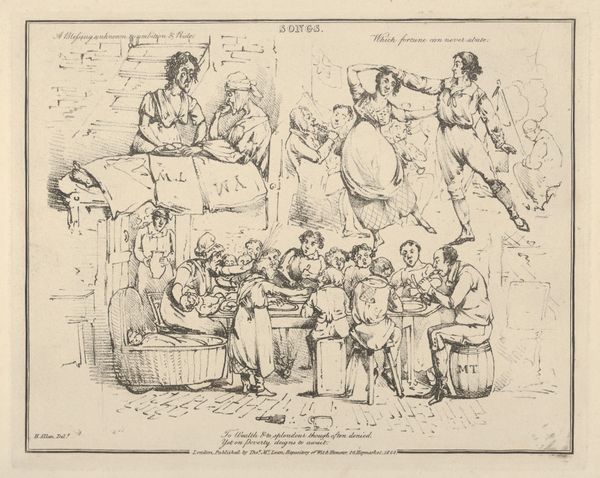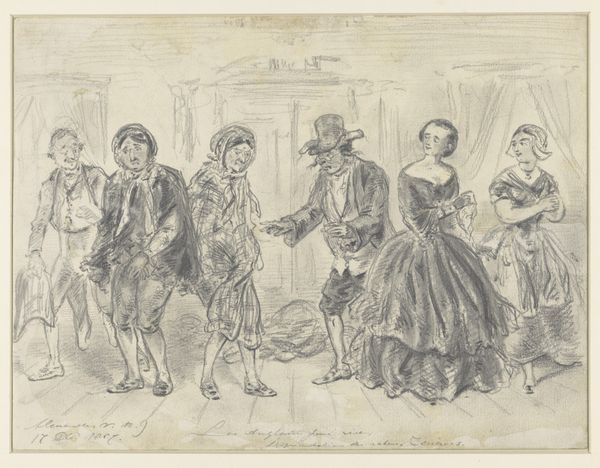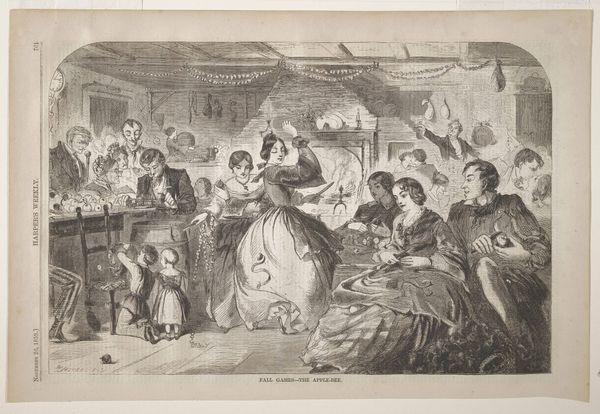
drawing, print, paper, pencil
#
portrait
#
drawing
# print
#
book
#
dog
#
paper
#
pencil drawing
#
group-portraits
#
romanticism
#
pencil
#
men
#
portrait drawing
#
genre-painting
Dimensions: Sheet: 12 13/16 × 15 3/4 in. (32.6 × 40 cm)
Copyright: Public Domain
Curator: Here we have “La Famille Denon,” created in 1817. It’s a pencil drawing, a print, on paper. Currently, it resides here at the Metropolitan Museum of Art. What are your initial impressions? Editor: It's quite intimate, yet slightly chaotic. Everyone seems to be in their own world – reading, observing, perhaps daydreaming. The gathering almost has an ethereal quality, heightened by the monochrome palette and soft rendering of form. Curator: Absolutely. The portrayal captures a sense of bourgeois domesticity. Dominque Vivant Denon came from an aristocratic background. These images of family activity provided social commentary on the roles that members assumed. Editor: Yes, but how might class structure the roles taken? Gender too feels quite performative. The women are objects of domesticity—the books might underscore them as learned, but it may only reiterate what is considered appropriate knowledge for the women. It becomes part of their marriageable 'value'. Curator: True. But within that restriction, the book signals access, some sort of intellectual agency – especially for the woman deep in her reading. Considering that social limitations existed for them to pursue interests outside the home and family… this image suggests these women at least took advantage of education to find personal meaning. Editor: I do like how you are adding nuances to ideas that can seem binary. We cannot deny it would also be nice to think of this drawing as offering social resistance – yet the women might just be literate accomplices complicit within the power relations of patriarchy. Curator: And then you’ve got the family dog! A symbol, maybe, of the patriarchal household's affection. He also appears caught up in it all. Editor: Yes, like everyone else! He seems blissfully unaware. And as a print it really raises the question of dissemination—of a growing bourgeois culture finding a foothold within the artistic and publishing industries. How radical! Curator: Precisely. Print media served an important public purpose back then, reflecting back the values of society while quietly constructing a cultural ideal. It makes us question even today what messages these images send. Editor: The beauty of art, isn’t it? It invites constant questions, and that is part of its politics. Curator: Indeed. A poignant reminder to look at what art does, as much as what it is.
Comments
No comments
Be the first to comment and join the conversation on the ultimate creative platform.
